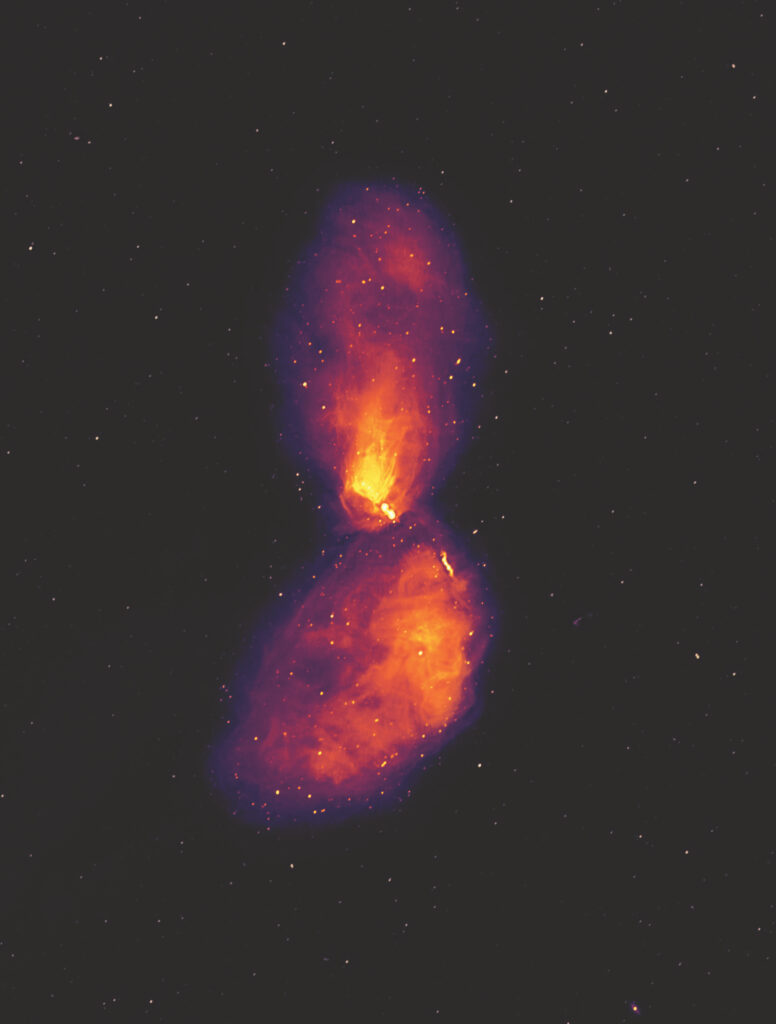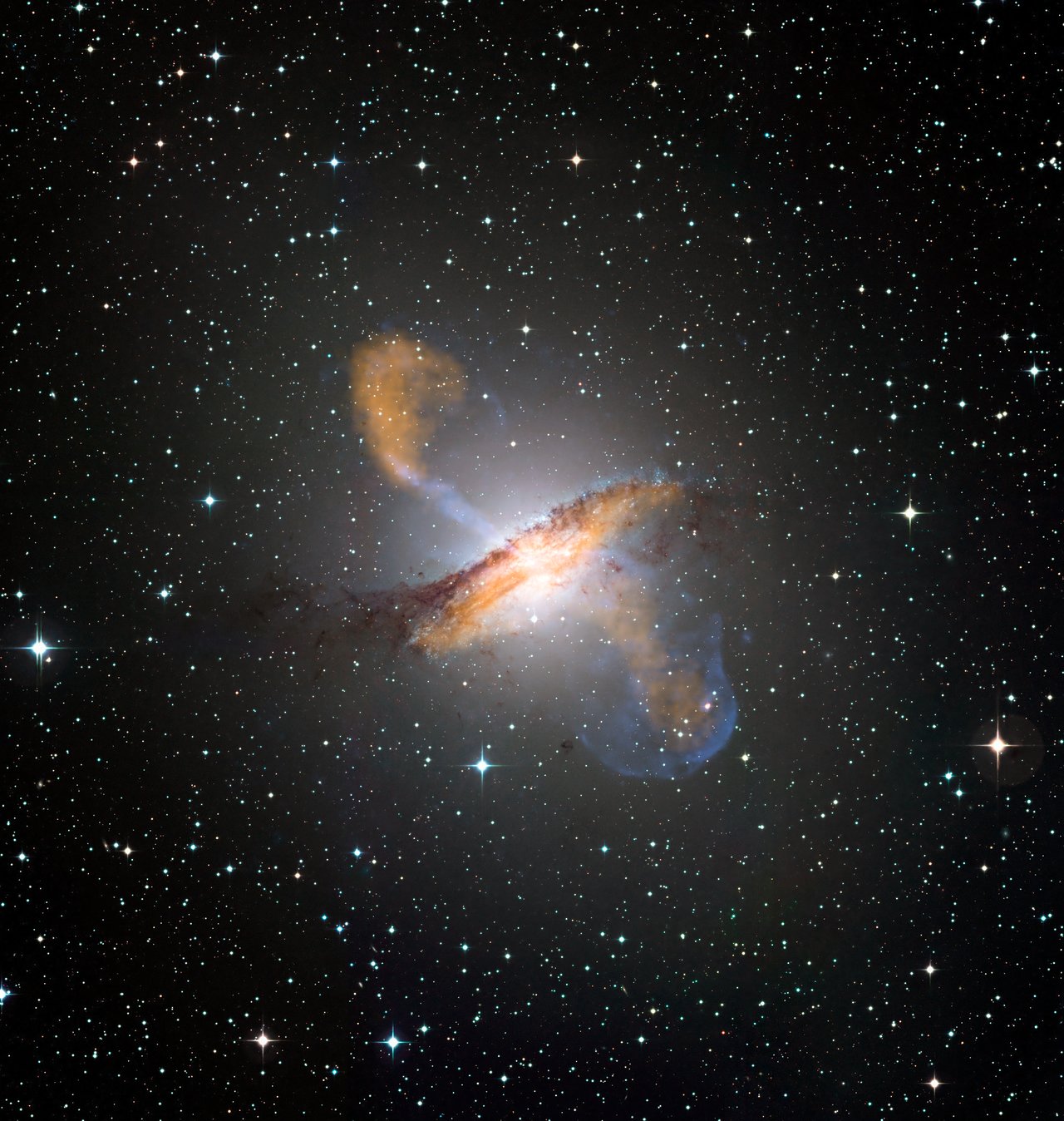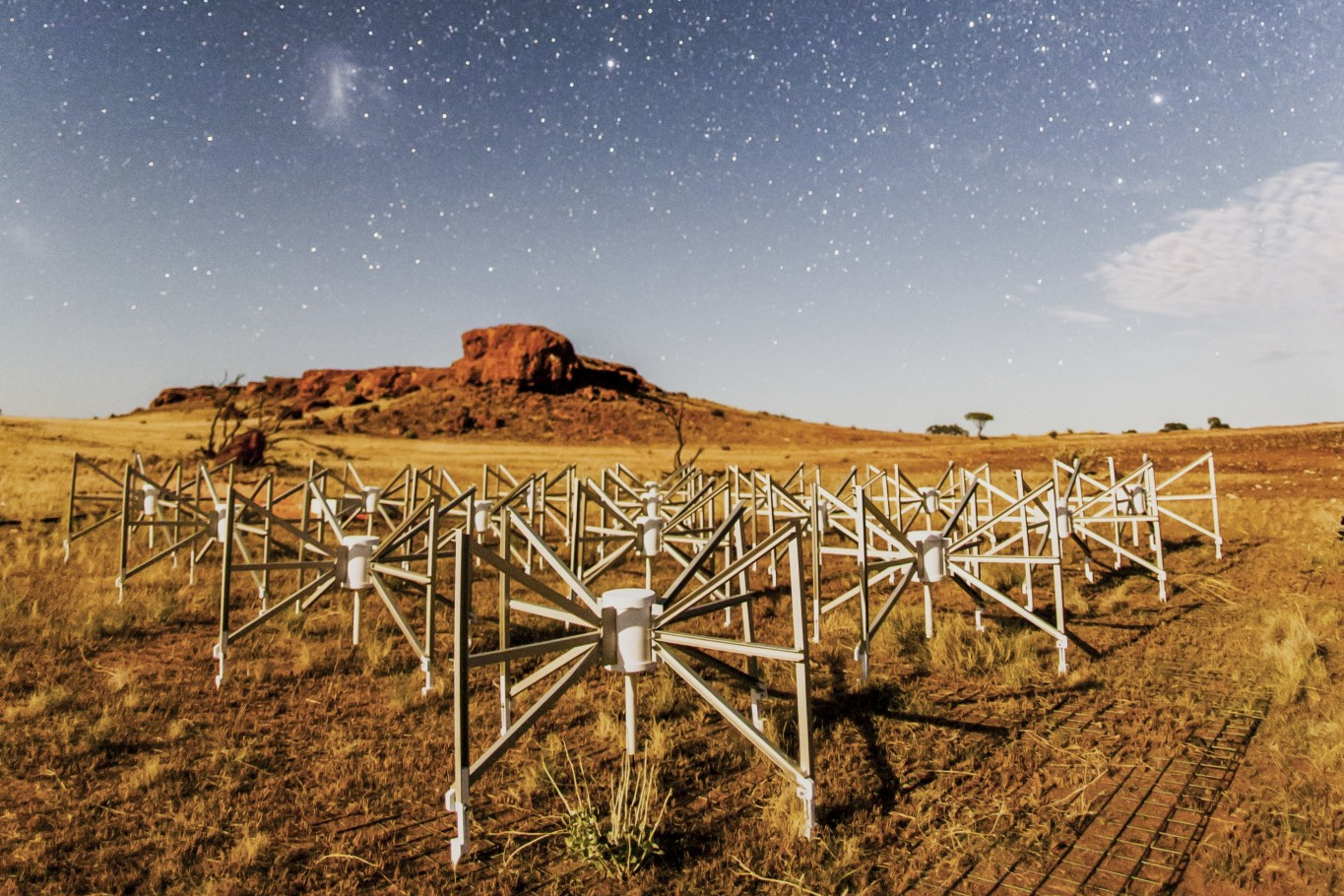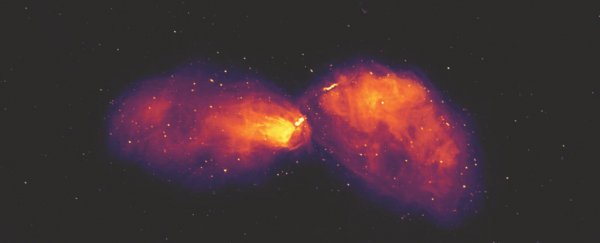Astronomers have captured a breathtaking radio wave image, showing our closest radio active black hole spewing out massive jets of plasma that span more than 16 times the size of the full moon in our sky.
The supermassive black hole in question is located in the center of the galaxy Centaurus A around 12 million light-years away.
The black hole has a jaw-dropping mass of around 55 million Suns but isn't visible in the image. It would be located within the small empty patch in the center of the two butterfly wing-like lobes.
When viewed from Earth, like it is in this photo, the plasma erupting from Centaurus A's black hole extends eight degrees across the sky, or the length of 16 full moons laid next to each other.
If that's not crazy enough, consider this for a second – those dots in the background of the image aren't stars. They're radio galaxies like Centaurus A, just located much further away.
And the galaxy itself isn't fully visible in this image because the radio jets are over a million light-years long, stretching well beyond Centaurus A.
 Centaurus A jets in radio waves. (Ben McKinley, ICRAR/Curtin & Connor Matherne, Louisiana State University)
Centaurus A jets in radio waves. (Ben McKinley, ICRAR/Curtin & Connor Matherne, Louisiana State University)
Of course, these 'radio bubbles' of plasma, as they're called, aren't visible with the human eye. That would be pretty damn spectacular (but also a little creepy) if they were.
They're visible in this picture after radio wave emissions were captured by the Murchison Widefield Array (MWA) telescope, located in an isolated part of Western Australia, away from other radio interference. It's the first time we've been able to see it in such detail.
 (ESO/WFI ; MPIfR/ESO/APEX/A.Weiss et al.; NASA/CXC/CfA/R.Kraft et al)
(ESO/WFI ; MPIfR/ESO/APEX/A.Weiss et al.; NASA/CXC/CfA/R.Kraft et al)
Above: A much closer look at Centaurus A, as seen in visible light, as well as X-ray (blue) and infrared (orange).
It's especially cool when you realise the plasma in those giant bubbles is moving at close to the speed of light when it's ejected out, as Centaurus A's black hole sucks up nearby matter.
"These radio waves come from material being sucked into the supermassive black hole in the middle of the galaxy," says astronomer Benjamin McKinley from Curtin University in Western Australia.
"Previous radio observations could not handle the extreme brightness of the jets and details of the larger area surrounding the galaxy were distorted, but our new image overcomes these limitations."
The image isn't just mind-boggling to look at – the research that comes with it has actually added support to an emerging new model known as 'Chaotic Cold Accretion' or CCA.
"In this model, clouds of cold gas condense in the galactic halo and rain down onto the central regions, feeding the supermassive black hole," says astrophysicist Massimo Gaspari from Italy's National Institute for Astrophysics.
"Triggered by this rain, the black hole vigorously reacts by launching energy back via radio jets that inflate the spectacular lobes we see in the MWA image. This study is one of the first to probe in such detail the multiphase CCA 'weather' over the full range of scales."
 One of the 256 tiles of the MWA. (Pete Wheeler, ICRAR)
One of the 256 tiles of the MWA. (Pete Wheeler, ICRAR)
MWA is made up of 4,096 spider-like antennae that stretch across kilometers, organised into 256 grids known as 'tiles'.
The research has been published in Nature Astronomy.
